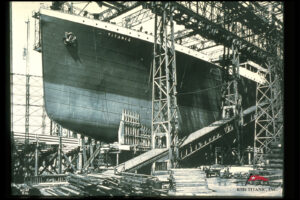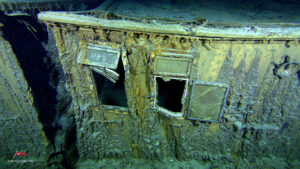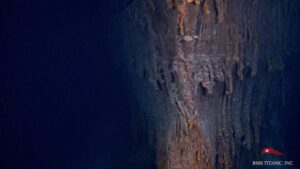2024 Titanic Expedition: RMS Titanic Inc.’s Journey to Preserve History

The RMS Titanic is one of the most famous ships in history. It sank on April 15, 1912, after hitting an iceberg during its maiden voyage from Southampton to New York City. Out of the 2,224 passengers and crew on board, 1,496 lost their lives. This tragedy led to major changes in maritime safety regulations. Today, the Titanic remains a symbol of both human ambition and tragedy.
RMS Titanic, Inc. is dedicated to preserving the legacy of this historic ship. As the exclusive salvor-in-possession of the Titanic wreck, they have conducted eight research and recovery expeditions. These efforts have helped us understand the Titanic better and preserve its memory. Their mission combines scientific research, education, and public exhibitions.
In July 2024, RMS Titanic, Inc. will embark on their first expedition to the wreck site of the RMS Titanic since 2010. They will use cutting-edge technology to gather new data and utilize their expertise to further protect and conserve this critically important historical site.
The Legacy of the Titanic
The Titanic was the largest ship afloat at the time of its launch. Built by Harland and Wolff in Belfast, it was the second of three Olympic-class ocean liners for the White Star Line. The ship was renowned for its luxury. It featured a gymnasium, swimming pool, smoking rooms, fine restaurants, and opulent cabins. It also had advanced safety features, including watertight compartments and remotely activated watertight doors.
Despite these features, the Titanic carried only 20 lifeboats, enough for about half the people on board. When the ship sank, many lifeboats were launched half-empty due to panic and confusion. The disaster resulted in the loss of 1,496 lives, making it one of the deadliest maritime disasters in history. The sinking of the Titanic had a profound impact on maritime safety regulations and popular culture.
RMS Titanic, Inc. – Preserving History
RMS Titanic, Inc. plays a crucial role in preserving the Titanic’s legacy. The company was granted salvage rights to the wreck by a U.S. federal court in 1994. This gives them the exclusive right to recover artifacts from the site. Their mission includes preserving the memory of the Titanic and its passengers through research, recovery, and exhibitions.
RMS Titanic, Inc. has conducted eight expeditions to the Titanic wreck site. These expeditions have recovered thousands of artifacts, which are displayed in exhibitions worldwide. The company’s efforts have greatly contributed to our understanding of the Titanic and its historical significance.
Past Expeditions
RMS Titanic, Inc. has conducted eight expeditions to the Titanic wreck site. Each expedition has provided valuable insights and recovered significant artifacts.
 1987 Expedition: The first expedition used state-of-the-art technology, including the manned submersible Nautile, to recover approximately 1,800 objects. Notable items included equipment from the stern Docking Bridge, an ornamental cherub, and multiple pursers’ leather traveling bags. This expedition marked the beginning of extensive artifact recovery efforts.
1987 Expedition: The first expedition used state-of-the-art technology, including the manned submersible Nautile, to recover approximately 1,800 objects. Notable items included equipment from the stern Docking Bridge, an ornamental cherub, and multiple pursers’ leather traveling bags. This expedition marked the beginning of extensive artifact recovery efforts.- 1993 Expedition: In April 1993, RMS Titanic, Inc., along with IFREMER, conducted a second joint expedition using the French research ship Nadir. The team recovered a set of the ship’s whistles, a double lifeboat davit and base, and a two-ton engine eccentric strap. Altogether, they recovered 800 artifacts from the wreckage. Personal items such as a delicate jet bead and a child’s marbles were also brought to the surface, showcasing the diverse nature of recovered objects.
- 1994 Expedition: The summer 1994 expedition, again with IFREMER, focused on recovering a variety of artifacts, including personal effects like a boot and binoculars. A significant achievement was the measurement of a 17-ton section of the ship’s hull, which was later retrieved. These artifacts were exhibited at the National Maritime Museum in Greenwich, England.
- 1996 Expedition: This expedition involved groundbreaking scientific investigations using advanced techniques such as reverse engineering and forensic science. The international team, including experts from five countries, examined the ship’s deterioration, notably studying the iron-consuming “rusticles.” Significant artifacts were recovered, and the expedition was documented by the Discovery Channel.
- 1998 Expedition: The fifth expedition continued scientific investigations and discovered new debris fields. Notably, a 17-ton section of the hull, known as “The Big Piece,” was recovered. This expedition also established a live fiber-optic television link from the ocean floor, allowing real-time exploration of the wreck, a first in history.
- 2000 Expedition: Utilizing the Russian research vessel Keldysh and submersibles MIR I and MIR II, this expedition recovered key artifacts, including the main wheel and steering stand from the docking bridge. The most astonishing find was 65 perfume vials belonging to first-class passenger Adolphe Saafeld, which retained the aroma of Edwardian perfume.
- 2004 Expedition: This mission marked a shift to using remotely operated vehicles (ROVs) for artifact recovery. The team used Phoenix International’s ROV and recovered a wide variety of artifacts. Among them were a gilded wall sconce from the À la Carte Restaurant and a tile from the Turkish Bath. The use of ROVs allowed for round-the-clock operations and detailed documentation of the recovery process.
- 2010 Expedition: Conducted in the summer of 2010, this was the most technologically advanced expedition to date. The team employed innovative measures to virtually raise the Titanic, bringing together leading archaeologists, oceanographers, and scientists. This expedition aimed to preserve the ship’s legacy through detailed imaging and analysis, contributing to our understanding of the Titanic’s historical and maritime significance.
These expeditions have provided invaluable insights into the Titanic’s story and historical significance. They have also helped preserve artifacts that keep the Titanic’s memory alive for years to come.
Titanic Expedition 2024

RMS Titanic, Inc. is preparing for its next expedition in July 2024. This will be its first expedition to the wreck site since 2010. The mission will use cutting-edge technology to focus on imaging and high-resolution photography. The goal is to preserve the Titanic’s legacy for future generations and scientific study.
The 2024 Titanic expedition will utilize remotely operated vehicles (ROVs) to survey the wreck site and debris field. The images captured will reveal important new insights into the condition of the site. They will also identify areas and artifacts at risk, contributing to ongoing conservation efforts and educational initiatives.
Objectives of the 2024 Expedition
The objectives of the 2024 expedition are to image, discover, inspire, and honor.
- Image:
- Digitally record the current condition of the wreck.
- Compare new images with those from 2010 to monitor changes.
- Examine how the site is deteriorating, including the Marconi Wireless Room.
- Discover:
- Explore new parts of the debris field.
- Find marine life that hasn’t been seen before.
- Identify new areas of damage that might allow access to the ship’s interior.
- Inspire:
- Involve people around the world in identifying artifacts for future recovery.
- Share the wreck site with the public through exhibitions, classrooms, and interactive experiences.
- Honor:
- Recognize the contributions of individuals like P.H. Nargeolet to our knowledge of the Titanic.
- Continue the work of artifact recovery and preservation.
Key Team Members
The 2024 expedition will be led by a team of experts.
- Troy Launay: President of TR LaunaY Inc. and Expedition Co-Leader. Troy is a certified commercial diver with over 30 years of experience in deep-water technology.
- David Gallo, Ph.D.: Senior Advisor for Strategic Initiatives for RMS Titanic, Inc. and Expedition Co-Leader. David is an oceanographer and explorer with over 40 years of experience.
- Evan Kovacs: Director of Underwater Photography. Evan is a world-class diver and explorer with extensive experience in filming underwater sites.
- Rory Golden: Titanic Historian and Chief Morale Officer. Rory has participated in multiple Titanic expeditions and is dedicated to inspiring the next generation.
- Jessica Sanders: President of RMS Titanic, Inc. Jessica has been with the organization since 2007 and plays a key role in its operations and exhibitions.
Educational and Conservation Efforts
RMS Titanic, Inc. is committed to education and conservation. The artifacts recovered from the Titanic are used for educational purposes and public exhibitions. These exhibitions have been viewed by millions of people worldwide.
The company’s conservation efforts ensure that artifacts are preserved for future generations. This involves meticulous processes to stabilize and protect artifacts from further deterioration. The 2024 expedition will contribute to these ongoing efforts by providing new data and insights.
How to Follow and Support the Expedition
 The public can follow updates on the Titanic Expedition 2024 through RMS Titanic, Inc.’s social media channels and official website. Regular updates will be provided to keep everyone informed about the progress of the expedition.
The public can follow updates on the Titanic Expedition 2024 through RMS Titanic, Inc.’s social media channels and official website. Regular updates will be provided to keep everyone informed about the progress of the expedition.
There are several ways to support RMS Titanic, Inc.’s mission. Donations and memberships help fund their research and conservation efforts. Visiting exhibitions is another way to show support and learn more about the Titanic.
Support RMS Titanic Inc.’s 2024 Expedition Today
The Titanic remains a symbol of human ambition and tragedy. RMS Titanic, Inc. plays a crucial role in preserving its legacy through research, recovery, and education. The 2024 expedition will provide valuable new insights into the condition of the wreck and contribute to ongoing conservation efforts.
By staying informed and involved, we can all help preserve the memory of the Titanic and its passengers. RMS Titanic, Inc.’s efforts ensure that this important chapter in history is not forgotten.
Stay updated on the Titanic Expedition 2024 by following RMS Titanic, Inc. on social media and visiting their website. Support their mission by making a donation, becoming a member, or visiting an exhibition. Together, we can help preserve the legacy of the Titanic for future generations.
